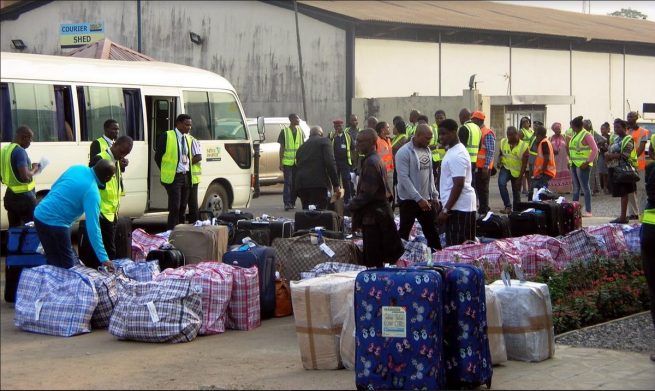BY SINAI FLEARY
LONDON – A second deportation charter flight to Zimbabwe from the United Kingdom has been confirmed for August 25, according to a key campaigner.
Dozens of Zimbabwean nationals are being held in Brook House Immigration Removal Centre and face removal from the UK.
A petition has been launched by Black Activists Rising Against Cuts (BARAC) UK to stop the flight to Harare and currently has over 24,000 signatures.
Speaking to The Voice, Zita Holbourne, co-founder and national co-chair of BARAC UK, said some Zimbabwean nationals have already been served removal directions.
She said: “The date has been confirmed as there are people in detention who have been given removal notices.”
Holbourne said many of those who were taken off the first charter flight to Zimbabwe last month, have been held in detention and now face removal again.
In July, a charter flight to Harare left with only 14 people on board after several legal challenges.
The flight was originally expected to have approximately 50 Zimbabwean nationals on board.
According to, this is just the beginning of a “series of deportations that the government will be implementing.”
She explained one of those facing removal, came to the UK at eight years old and had refugee status before it was revoked.
Campaigners have argued deportations to Zimbabwe should postponed until the country has stabilised after recent political and social unrest.
Holbourne has started two petitions, one is a generic anti-deportation petition and the other is to specifically halt any removals to the southern African country.
She said: “It is important to sign it because it sends a message to the government and all of the organisations that are complicit with deportation flights that those being targeted aren’t alone.
“The general petition has over 200,000 signatures and that is a sign. By signing the petition you will get updates about what action you can take next and how you can help.. and it boosts the morale of those impacted.
“Some of them do feel suicidal and just to know there are people standing with them, by challenging what the government is doing and raising awareness, does help people and keeps up the pressure.”
Last week, a charter flight to Jamaica left the UK with just seven people after last minute legal appeals.
The Home Office has been approached for comment.- The Voice

 Slider3 years ago
Slider3 years ago
 National4 years ago
National4 years ago
 Tourism and Environment4 years ago
Tourism and Environment4 years ago
 Opinion4 years ago
Opinion4 years ago
 Special reports4 years ago
Special reports4 years ago
 National4 years ago
National4 years ago
 National3 years ago
National3 years ago
 National3 years ago
National3 years ago



